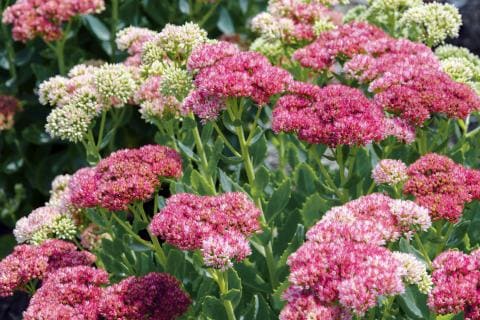Introduction:
Welcome to the ultimate guide on sedum plant varieties! Sedums, known for their resilience and beauty, encompass a wide array of species, each with its unique charm and characteristics. Whether you’re a seasoned gardener or just starting your green journey, this guide will illuminate the fascinating world of sedums, offering insights into their cultivation, care, and aesthetic appeal.
Exploring Sedum Plant Varieties: A Closer Look
Understanding Sedums:
Sedums, belonging to the Crassulaceae family, are succulent plants admired for their fleshy leaves, drought tolerance, and low maintenance requirements. These versatile plants thrive in various climates and soil conditions, making them popular choices for both indoor and outdoor settings.
Diverse Growth Habits:
Sedums exhibit diverse growth habits, ranging from compact, mat-forming varieties to tall, upright specimens. Whether you prefer cascading foliage for hanging baskets or upright stems for borders, there’s a sedum variety to suit every preference and space.
Seasonal Interest:
One of the remarkable features of sedums is their seasonal interest, offering visual appeal throughout the year. While some varieties dazzle with colorful blooms in summer and fall, others captivate with evergreen foliage that retains its beauty even in winter.
Popular Sedum Varieties:
Explore a myriad of sedum varieties, each with its unique characteristics and growing requirements:
- Sedum spurium (Dragon’s Blood): Renowned for its deep red foliage and pink flowers, this ground cover sedum adds a vibrant splash of color to rock gardens and borders.
- Sedum spectabile (Showy Stonecrop): With its large, flat flower heads attracting butterflies and bees, this upright sedum variety is a favorite for late-season interest.
- Sedum morganianum (Burro’s Tail): Characterized by trailing stems adorned with plump, bead-like leaves, this succulent sedum is perfect for hanging containers and sunny windowsills.
Cultural Requirements:
While sedums are generally low-maintenance plants, providing optimal growing conditions enhances their vigor and beauty. Ensure they receive ample sunlight, well-draining soil, and occasional watering to thrive.
Cultivating Sedums: Tips for Success
Site Selection:
Choose a sunny location for planting sedums, as they thrive in full sunlight. Ensure the soil is well-draining to prevent waterlogged conditions, which can lead to root rot.
Planting Techniques:
When planting sedums, dig a hole slightly larger than the root ball and gently loosen the roots before placing them in the soil. Backfill the hole and water thoroughly to settle the soil.
Watering and Feeding:
Sedums have low water requirements once established, making them ideal for drought-tolerant landscapes. Water deeply but infrequently, allowing the soil to dry out between waterings. Avoid overwatering, as it can cause root rot.
Pruning and Maintenance:
Prune sedums in early spring to remove dead or damaged growth and encourage bushier growth. Dividing overcrowded clumps every few years rejuvenates the plants and promotes better airflow.
FAQs (Frequently Asked Questions)
Q: Do sedums require full sun to thrive? A: Yes, sedums prefer full sunlight and thrive in sunny locations with well-draining soil.
Q: How often should I water my sedum plants? A: Water sedums deeply but infrequently, allowing the soil to dry out between waterings. Overwatering should be avoide to prevent root rot.
Q: Can sedums tolerate cold temperatures? A: Many sedum varieties are cold-hardy and can withstand freezing temperatures, making them suitable for temperate climates.
Q: What is the best way to propagate sedums? A: Sedums can be propagated through stem cuttings or division. Simply cut a healthy stem and place it in well-draining soil to root.
Q: Are sedums prone to any pests or diseases? A: Sedums are relatively pest and disease-resistant, but they may occasionally face issues such as aphids or fungal infections. Proper cultural practices and monitoring can help prevent such problems.
Q: Can sedums be grown indoors? A: Yes, many sedum varieties can be grown indoors as long as they receive sufficient sunlight and well-draining soil.
Conclusion:
In conclusion, sedum plant varieties offer a delightful tapestry of colors, textures, and forms, enriching any garden or landscape with their charm and resilience. Whether you’re drawn to their vibrant blooms or sculptural foliage, incorporating sedums into your outdoor space is sure to elevate its beauty and allure.


